#Gay and Lesbian History Month
Text


advice to straight men from lesbians in an article titled "heterosexual outreach" by nancy ford, published in "dimensions" may 1995
5K notes
·
View notes
Text

#lgbtq+#gay#lesbian#bisexual#trans#queer#trans men#trans women#non binary#pansexual#asexual#pride#pride month#transgender#transfem#nonbinary#trans joy#trans community#trans beauty#information#learning#fyi#history#nature#science#the more you know
6K notes
·
View notes
Text

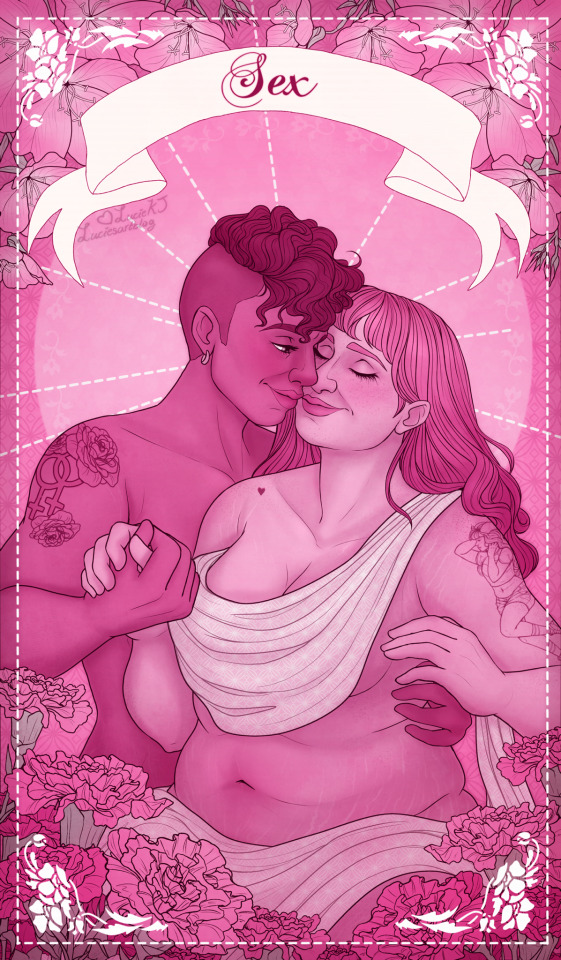
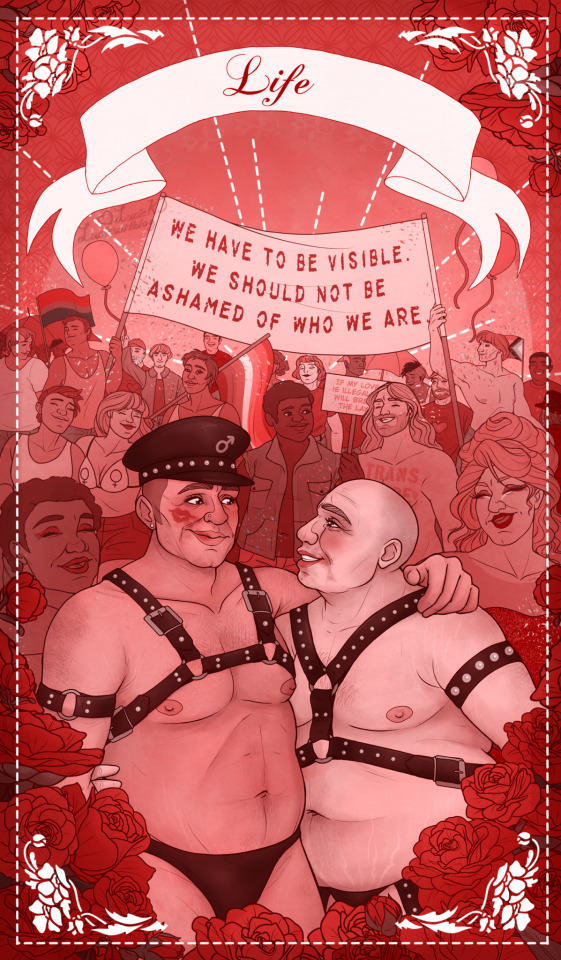
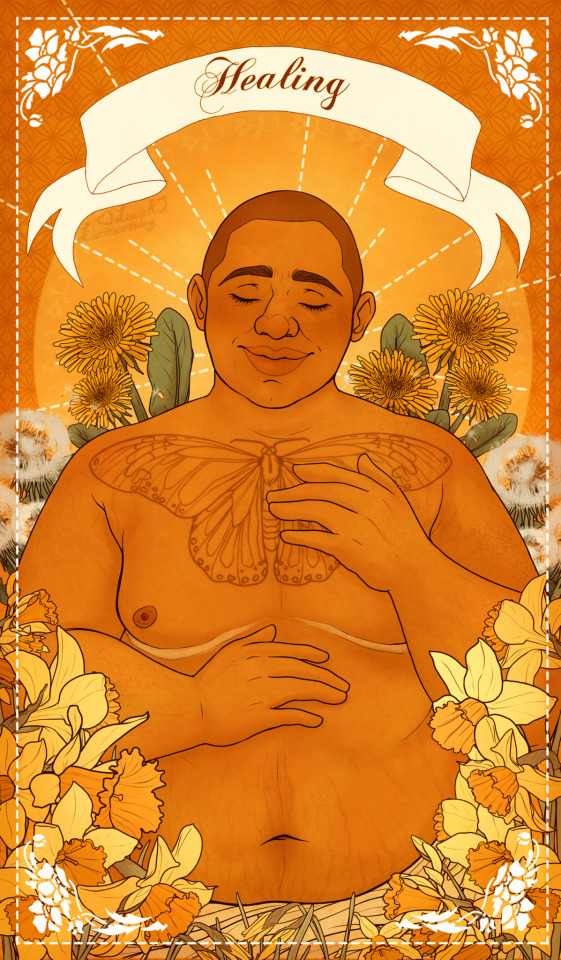



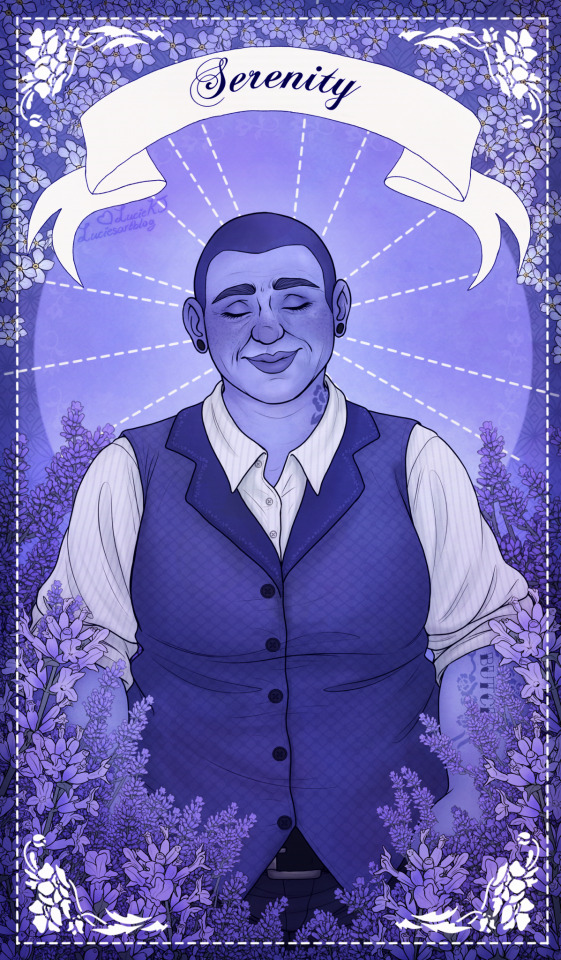
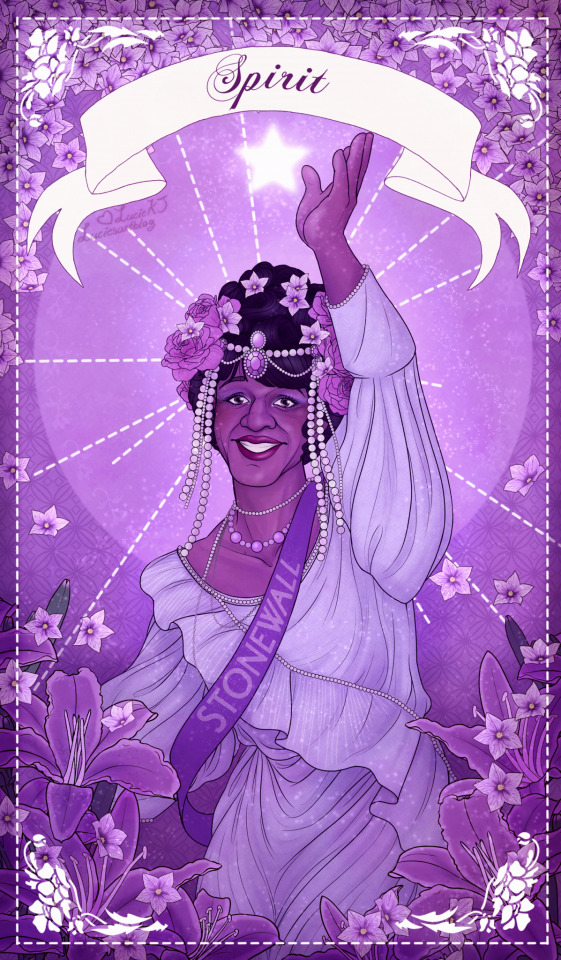
Gilbert Baker (June 2, 1951 - March 31, 2017) was a gay American artist, designer and activist, best known as the primary creator of the rainbow flag. In 1972 Baker was living in Chicago as an openly gay man, he was taught to sew by a fellow activist, Mary Dunn, using these skills to create banners for gay-rights and anti-war protest marches. It was also during this time that he met and became friends with Harvey Milk, an influential gay leader, who challenged Baker to create a new symbol of pride for the gay community.
The first rainbow flags were produced by a team that included Baker, seamster James McNamara and artist Lynn Segerblom. Segerblom, who was then known as Faerie Argyle Rainbow, reports to have created the original dyeing process for the flags. Thirty volunteers hand-dyed and stitched the first two flags for the parade. These original flags flew at the San Francisco Gay Freedom Day Parade celebration on June 25, 1978.
Though many variations have emerged in the decades since, the original design had eight stripes, with a specific meaning assigned to each of the colours: Hot pink for “sex”, red for “life”, orange for “healing”, yellow for “sunlight”, green for “nature”, turquoise for “magic” (though sometimes given as “art”?), indigo for “serenity” and violet for “spirit”.
I’m a little late for pride month, but I got all this done a lot quicker than I expected considering I only started working on it at the beginning of June (though I’ve been planning it on and off for a few years now😅). I did a lot of research and planning for each piece, and there was a lot I wanted to communicate with the project as a whole - it’s been a lot of work, and I challenged myself with a bunch of stuff I’m not familiar with, but I’m really happy with how everything turned out.
Happy pride, everyone, here’s to our community, to all the work that got us here, and to all the progress still to come! 🏳️🌈✨🏳️⚧️
#pride month#gay pride#lgbt pride#lgbt art#trans pride#queer pride#nonbinary pride#lesbian pride#wlw pride#lesbian art#lgbtq positivity#lgbt history#artists on tumblr#queer artists#lgbt artists#queer artist#enby artist#bisexual art#bisexual pride#bisexual artist#trans art#trans positivity#my art
2K notes
·
View notes
Text

“I’ve fallen madly in love with a woman. And it seems to me so absolutely natural and genuine - there’s nothing problematic about it at all. I just feel proud and uncontrollably glad.”
- Tove Jansson
#god I love her so much#how fitting for pride month <3#cottagecore#tove jansson#pride month#moomin#lgbtq rights#lgbtq#lgbtq history#lgbt#gay#bisexual#lesbian#love#lgbtlove#lovecore#cute#illustration#quote
2K notes
·
View notes
Text
Black Vintage Queerness
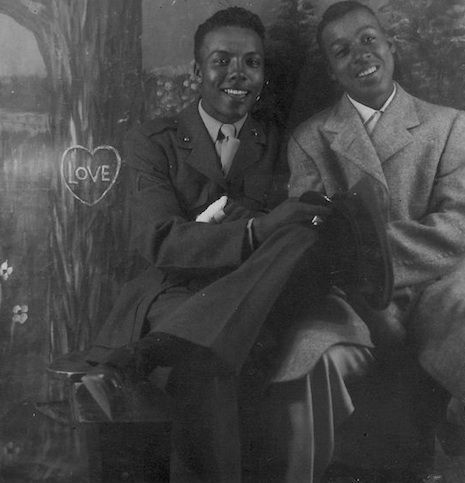


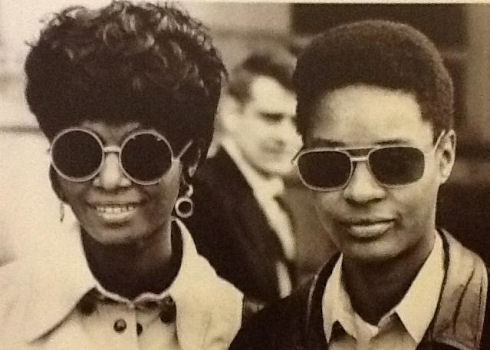



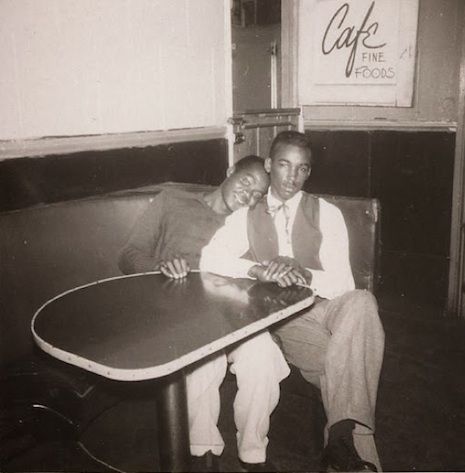


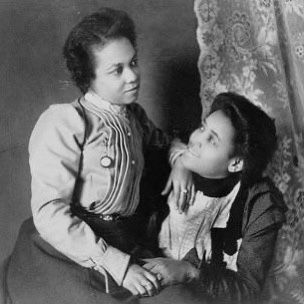

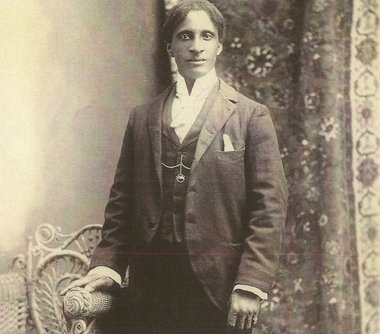
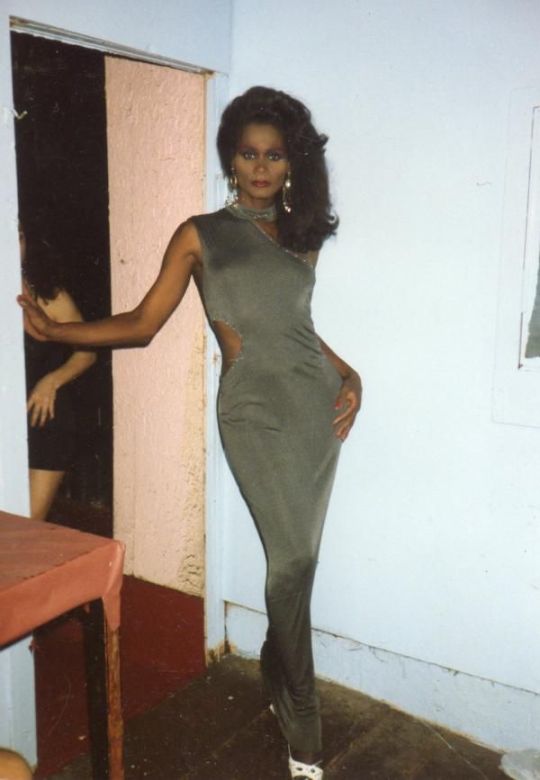

happy black history month !! enjoy some vintage lesbians, gays, and trans people!! ^^
#queer#queer history#black#black history#black history month#bhm#lgbt#lgbtq#lgbtqia#lesbian#gay#bisexual#trans#trans man#trans woman#sapphic#wlw#mlm#achellian#queer culture#black lesbian#black queers#woman#women#man#men#transgender
376 notes
·
View notes
Text
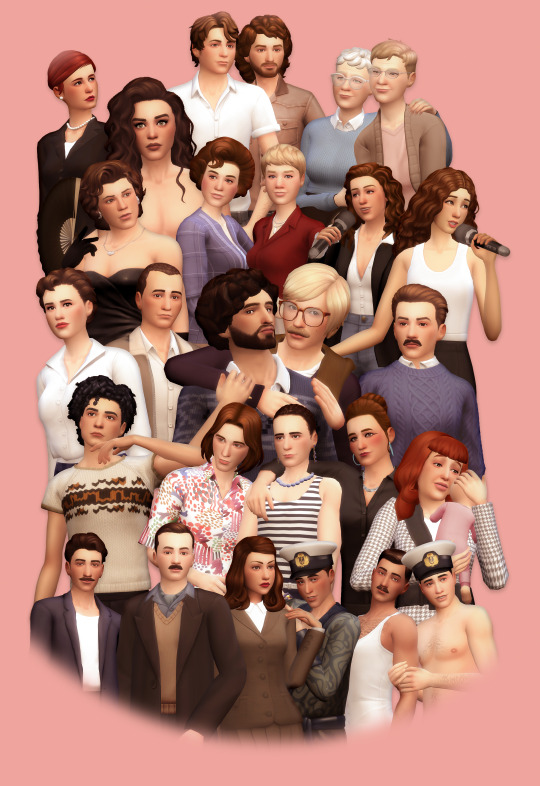
HAPPY PRIDE MONTH
As every year this is a good date to remember the daily struggle for the rights of the LBGT+ community. It is also a time to learn about the people who made it possible for us to identify ourselves as who we are today without fear of reprisals or being punished by the law.
This month I got involved in the history of Argentina and its different movements for the fight for rights through the 20th century. Here I come to share some important figures, some more known than others, but obviously there are a lot that I have left out of this publication.

Sara Facio (1932-2024) & Maria Elena Walsh (1930-2011)
A couple of intellectual artists that would need a separate publication to go deeper into the subject. Sara is one of the greatest Latin American photographers who with her camera contributed to the creation of the most outstanding photographic heritage of the country.
Maria Elena is a writer, singer and composer whose children's songs resonate to this day because they are much more profound than they seem and are still relevant today.
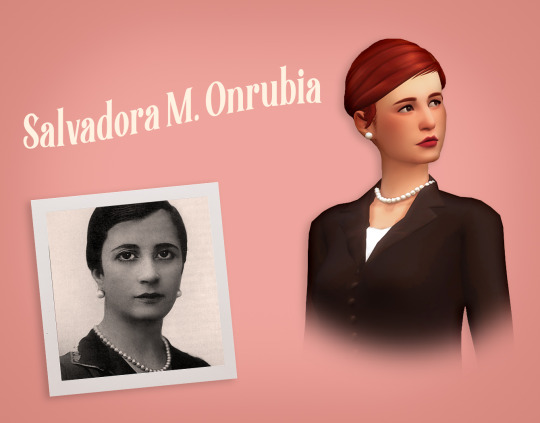
Salvadora Medina Onrubia (1894-1972)
She was a writer, militant anarchist, single mother and the first woman to run a newspaper in the country. She was the first Argentinean woman to dare to write about double sinners, lesbians and adulteresses. One of her most valued plays was Las descentradas, premiered in 1929.
There, Salvadora honors her own contradictions, narrating women who question monogamous structures, marriage and the traditional family.
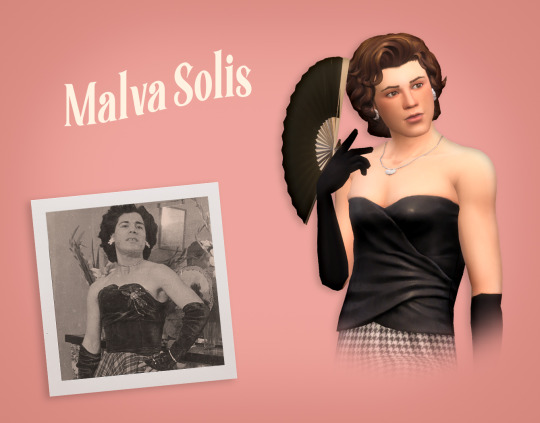
Malva Solis (1920-2015)
She was a transvestite writer who lived for 95 years when the life expectancy of this community in the country was under 40 years old. In 1951 founded the first trans organization on record, Maricas Unidas Argentinas.
She has the oldest series of trans photographs in the country, dating from 1940 to 1980, when simply having those photographs at home was cause for being arrested. There is a documentary based on the photographs and conversations with her at her home called "Con Nombre de flor".

Jorge Horacio Ballve Piñero (1920-?)
Piñero was a young man from a well-to-do family of the Buenos Aires society at the beginning of the century. Together with his best friend Adolfo and Blanca, he organized gatherings in his apartment in Recoleta, and was a pioneer of male erotic photography.
They mixed the privileged social class with workers, dishwashers, gas station workers, sailors and cadets from the Military College. These three characters were involved in a police case involving cadets from the military college, known as the Cadet Scandal.
In the police archives remain captive the photographic collection, intended for pleasure and personal aesthetic enjoyment that tragically proved key to incriminate some friends who just wanted to have fun.
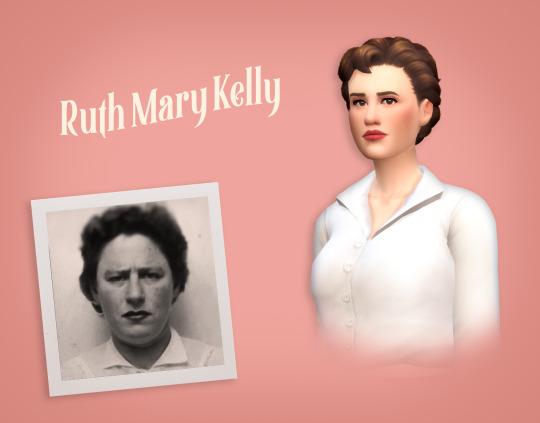
Ruth Mary Kelly (1925-1994)
She was a bisexual woman, who worked as a "Wohoo Worker". Founder of Grupo Safo in 1972, the first Argentine lesbian organization, and of the Frente de Liberación Homosexual (Homosexual Liberation Front). In 1972 she wrote Memorial de los Infiernos about her experiences as a "Wohoo" worker and bisexual, persecuted by the psychiatric-prison system.
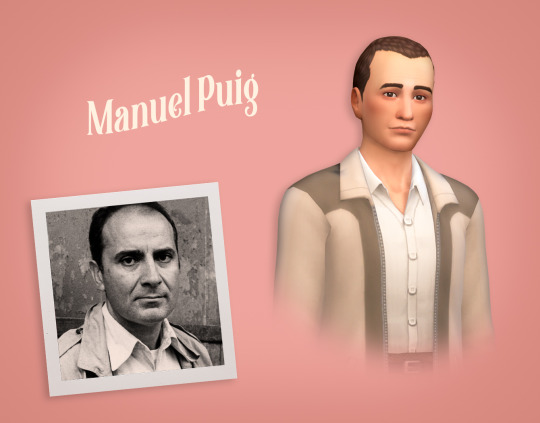
Manuel Puig (1932-1990)
He was an Argentine writer and LGBT+ activist, author of the novels Boquitas pintadas, El beso de la mujer araña (Considered one of the most recognized LGBT works in Latin America and one of the best works in Spanish of the 20th century) etc.
He also fought against authoritarianism and machismo, and was one of the founders of the Homosexual Liberation Front in 1971, one of the first associations for the defense of LGBTQI+ rights.
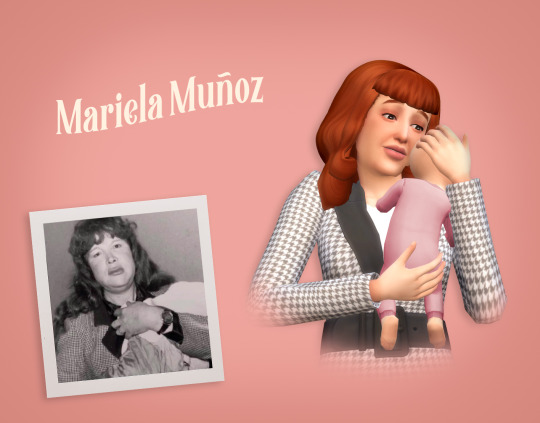
Mariela Muñoz (1943-2017)
She was the first transsexual woman to be recognized by the state and given a female ID card on May 2, 1997. At the age of 16 she became independent, and it was then that she began caring for children, teenagers and single mothers. She cared for children who had been abandoned by their mothers, whom she loved and cared for.
She raised, during her lifetime, 23 children and 30 grandchildren. In a dispute over the guardianship of 3 children in 1993, Argentina was confronted for the first time with the debate as to whether a transsexual person "could be a mother"
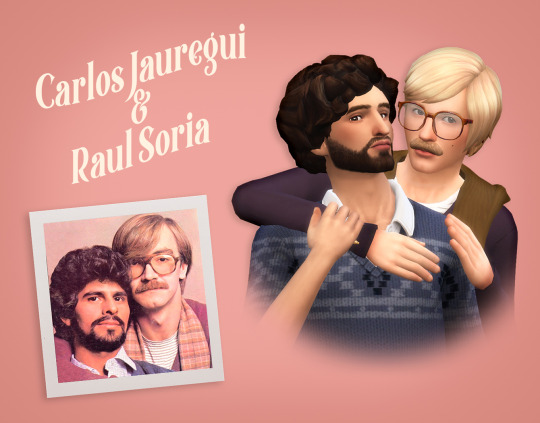
Carlos Jauregui (1957-1996) & Raul Soria
Carlos was a History professor and the founder of the Civil Association Gays for Civil Rights, organizer of the first Pride march in Buenos Aires and an essential figure for Argentine activism. In 1984, he broke with the schemes by appearing in the magazine Siete Días embracing the activist Raul Soria, a homosexual person assumed his sexuality in a public way for the first time.
He believed that media visibility is fundamental for LGTB people. Leaving aside the fear and silence that other generations suffered for years. In 1985, Raul would present himself as the first gay candidate for congressman in the country.

Roberto Jauregui (1960-1994)
Brother of Carlos, was a journalist, actor and the first activist for the rights of people with HIV in the country. In 1989 he exposed the inequality in access to treatment at that time due to the price of medication.
He played a central role in marches, actions, talks and interviews to demand human rights for people living with the virus. A well-known phrase of his is "Showing one's face is not easy in a society that discriminates, censures and separates".
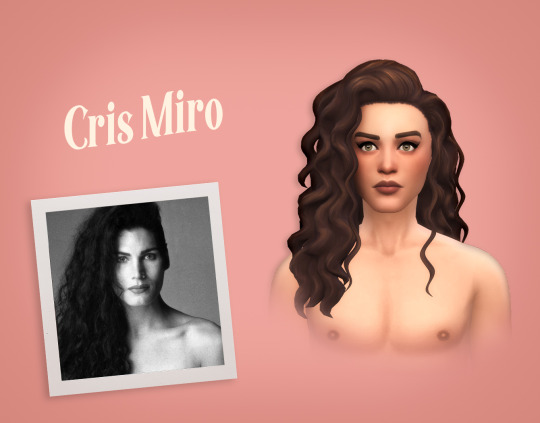
Cris Miró (1965-1999)
Cris was the first visible trans people that appeared in the media and broke with the "transvestite" paradigm. A dental student, she got involved in the artistic underworld and later studied classical dance, musical comedy and acting.
Her career was meteoric: the popularity of revue theater catapulted her to the small screen where she became a sought-after figure in the most popular programs. On June 23rd, a series about his life inspired by his biography was released, available on Prime Video.
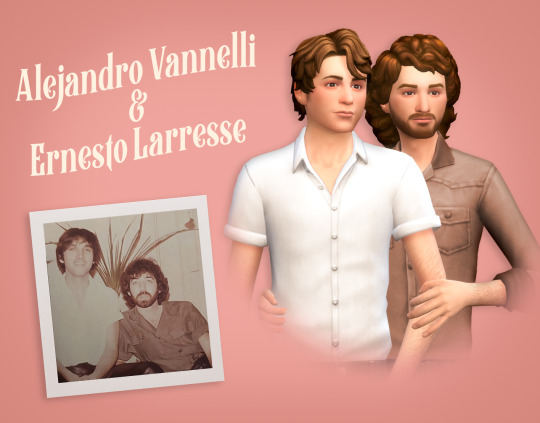
Alejandro Vannelli (1948-) y Ernesto Larresse (1950-)
They were the first couple in the province of Buenos Aires to get legally married on July 30, 2010 after the Equal Marriage Law was passed. They met in 1976 because of a triple A bomb in the theater where Larresse was performing with Nacha Guevara, then he joined the cast of Vannelli.
At the beginning they did not like each other because of Vanelli's appearance as a wealthy young man and Larresse was the opposite, but opposites attracted and they were a couple for 34 years.

Norma Castillo (1943-) y Ramona "Cachita" Arévalo (1943-2018)
They were the of South America's first gay marriage on April 9, 2010. Norma and Ramona were married to two Colombians, who were cousins to each other.
During the dictatorship they both went into exile in Colombia and there they fell in love and lived their romance clandestinely, until Cachita separated and Norma was widowed by her husband. They lived their love freely and even opened an LGBT discotheque in Colombia. In 1998 they returned to Argentina and began to work in sexual diversity organizations.
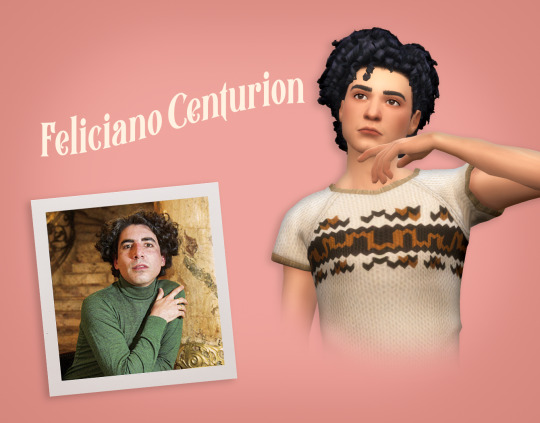
Feliciano Centurión 1962-1996)
He was a visual artist, a Paraguayan painter professionally trained in Argentina. He grew up in a home dominated by women, where he learned to sew and crochet. Inspired by queer aesthetics and folk art, he used to incorporate household textiles and references to the natural world.
She handled kitsch art and languages not considered high art with a great deal of knowledge and sensitivity.

Humberto Tortonese (1964-) , Alejandro Urdapilleta (1954-2013) & Batato Barea (1961-1991)
Batato was an actor and "literary transvestite clown" as he called himself, one of the most important personalities of the underground theater movement of the post-dictatorship years.
Together with Alejandro Urdapilleta and Humberto Tortonese, revolutionized the underground scene of the 80's - in places like the Parakultural. They disguised themselves, wore make-up and improvised delirious and strident scenes for the decade.

Sandra Mihanovich & Celeste Carballo
Sandra and Celeste are two singers who were visibly lesbians during the 80s and early 90s. Together they released the albums "Somos mucho mas que dos" and "Mujer contra mujer" which became a symbol of belonging for the whole LGBTQ arc in our country.
They managed to be part of the rock scene, an area historically dominated by men. Sandra among all her songs is "Soy lo que soy" released in 1984 composed by Henry Jerman.
#Argentina LBGT#Lgbt Latin America#ARG Queer#lgbt#lgbt love#gay pride#bisexual pride#lesbian pride#pride month#the sims 4#sims 4 pride#sims 4 edit#sims 4 render#ts4 lgbt#lgbt history#queer history#victorian lgbt#PrideFlagLegacy#pride flag legacy challenge#ts4 historical#sims 4 historical#Cris Miro#Sandra Mihanovich#Celeste Carballo#Maria Elena Walsh#Sara Facio#Ballve Piñero#Carlos Jauregui#Roberto Jauregui#Feliciano Centurión
243 notes
·
View notes
Text
Roughly 10 Cool Historical Queer Figures More People Should Know About
Part 1 - From Ancient Era to Early Modern Era
In spirit of Pride Month here's some snippets of queer history I think are interesting.
I've been working on a series of deep dives into interesting historical queer figures, but I haven't had the time to continue my list after the first entry about Julie d'Aubigny. I do want to continue with it, but I came to the realization that I will never have to time to do all the cool and interesting figures in depth, since there's too many, so I decided to do a list with brief descriptions about some of my favorite figures who are not that well known. Some of them are more well-known than others but I think they all deserve more acknowledgement.
I was able to trim down the number of figures to (roughly) 20, which was still too many for one post, so it's two posts now. They are in chronological order, so this part is set mostly before Victorian Era and the second part will be from Victorian Era onward.
This list is centered around western history (but not exclusively) because that's the history I'm most familiar with, though it's definitely not all white, since western history is not all white. I will be avoiding using modern labels, since they are rarely exactly applicable to history, rather I will present whatever we know about these figures' gender, sexuality and relationships. If there's information about what language they used about themselves, I will use that. Often we don't know their own thoughts, so I will need to do some educated guess work, but I will lean towards ambiguity whenever evidence is particularly unclear. If you are the type of person who gets angry with the mere suggestion there's a possibility that a historical gnc person might not have been cis, I encourage you to read my answers to related asks (here and here) first before sending me another identical ask. Try to at least bring some new arguments if you decide to waste my time with your trans erasure.
1. Khnumhotep and Niankhkhnum (latter half of 2400 BCE)

Khnumhotep and Niankhkhnum were ancient Egyptian royal servants, and possibly the first recorded gay couple in history known by name. They shared the title of Overseer of the Manicurists in the Palace of King Nyuserre Ini. They both had a wife and children, but they (along with their families) were buried together in a tomb. The tomb decorations show them similarly as other afterlife couples.
2. Marinos the Monk (c. 5th-8th century)
Marinos the Monk was born as Marina somewhere in eastern parts of Byzantine Empire, likely in the Levant. He was from a wealthy Christian family, possibly Coptic. Assigned female at birth his widowed father planned to marry him off and go to a monastery himself, but he convinced his father to take him with him dressed as a boy named Marinos. His father agreed and they were accepted as monks. After his father died many years later, he continued his life as a male presenting monk. Later he was accused of fathering an illegitimate child with a daughter of an innkeeper, which was not possible, but he didn't revoke the accusations, instead he begged for the abbot's forgiveness for "his sins". Marinos was banished from the monastery and became a beggar. For 10 years he raised his alleged illegitimate child as a father, until he was allowed to return to the monastery and do penance. Only after his death the abbot and the monks discovered his genitals and his inability to father children and were distraught for punishing an innocent man for 10 long years. The real father was discovered and along with the innkeeper and his daughter they all came to honor Marinos' grave and ask his forgiveness. He was canonized as a saint for his sacrificial selflessness, modesty and humility and honored across the Mediterranean from Ethiopia to France.
3. Mubārak and Muẓaffar al-Saqlabi (c. 10th - 11th century)
Mubārak and Muẓaffar were co-rulers of Taifa of Valencia in Muslim Spain. Al-Saqlabi means literally "of the Slavs", which in Al-Andalus was a general term for enslaved northern Europeans, as the two had been enslaved as children. They were in the service of another al-Saqlabi, a chief of police, and they worked they way up as civil servants till a local military coup in 1010, which resulted in them becoming the emirs of Taifa of Valencia. English language sources often describe them as "brothers" and "eunuchs", which gives the "historical gal pals" trope a concerning twist, but contemporary Muslim sources wrote fawningly about their passionate love, trust based on equality and mutual devotion. There was a popular genre of homoerotic poetry in the Islamic world at the time and poems in that genre were written about celebrating Mubārak and Muẓaffar's relationship. In 1018 Mubārak was killed in a riding accident and Muẓaffar shortly after in an uprising.
4. Eleno de Céspedes (1545 – died after 1589)
CW: genital inspection
Eleno was born in Andalusia, Spain, to an enslaved black Muslim woman and to a free Castillian peasant. He was assigned female at birth, given name Elena, and branded as a mulatto born to a slave. She was freed as a child and married to a stonemason at 15-16 years old. When pregnant, her husband left her and died a while later. Later Eleno testified that his intersex condition became externally visible, while he gave birth, and he became a man. He left his son to be raised by a friend and traveled around Spain. After he stabbed a pimp and ended up in jail, he started presenting as a man and openly courting women. Eventually he taught himself to be a surgeon with the help of a surgeon friend.
When he married María del Caño, his maleness was questioned and he was subjected to genital inspection multiple times and it was agreed by doctors that he had definitely male genitals, possibly also female genitals. After a year of marriage the couple was accused of sodomy. Eleno was tried by the Spanish Inquisition and subjected to more genital inspections, during which no penis was found. He claimed that his penis had been amputated after an injury. He defended himself in the trial by arguing that his intersex condition was natural and he had become a man after his pregnancy, so his marriage was legal. He was sentenced only for bigamy, since he had not confirmed that his husband was dead and punished as a male bigamist with 200 lashes and 10 years of public service to care for the poor in a public hospital. His fame attracted a lot of people wanting to be healed by him, which which was very embarrasing for the hospital so he was sent away and eventually exonerated from his charges.
7. Chevaliére d'Éon (1728-1810)

Charles d'Éon de Beaumont was born to a poor French noble family. In their 20s they became a government official and at 28 they joined the secret spy network of the king, Secret du Roi. They became a diplomat first in Russia and later in Britain while they used their position to spy for the king. Rumors circulated in London that they were secretly a woman. While in London they had a falling out with the French ambassador, accused him of attempted murder and published secret diplomatic correspondence. They were instead accused of libel and went into hiding. After the death of Louis XV in 1774 and the abolishment of Secret du Roi, d'Éon negotiated with the French government of the end of their exile in exchange for the rest of the secret documents he possessed. D'Éon took the name Charlotte, claimed she was in fact a cis woman - she had pretended to be man since a child so she could get the inheritance - and demanded the government to recognize her as such. When the king agreed and included funds for women's wardrobe, she agreed and returned to France in 1777. After that she helped rebels in the American War of Indepence - was not allowed to ]go and fight too, ghostwrote her not super reliable memoir, offered to lead a division of female soldiers against the Hasburgs in 1792 - was for some reason denied, attended fencing tournaments till 65 years old and settled down for the rest of her years with a widow, Mrs. Cole. After her death a surgeon reported that she had male primary sex characteristics, but fairly feminine secondary sex characteristics, like round breasts, which might suggest she had hormonal difference/was intersex in some way.
8. Public Universal Friend (1752-1819)
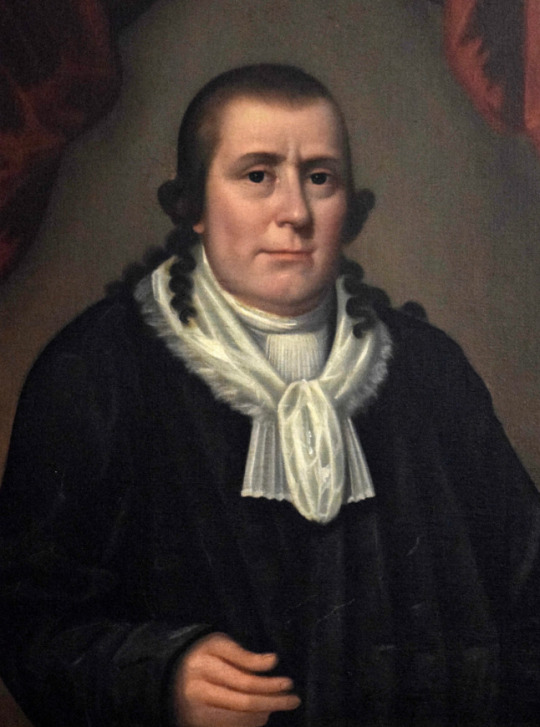
Public Universal Friend, or The Friend or PUF, was born as Jemima Wilkinson to Quaker parents in Rhodes Island, USA. Jemima contracted a disease in 1776, gained intense fever and almost died. The Friend claimed that she did die and God sent the Friend to occupy her body. The Friend didn't identify as man or a woman, and when asked about the Friend's gender, the Friend said "I am that I am". The Friend didn't want any gendered pronouns or gendered language to be used about the Friend. The Friend's pronouns, according to the writings of the Friend's followers, were "the Friend", "PUF" and possibly he. First recorded neo-pronouns perhaps? The Friend also dressed in androgynous/masculine manner.
The Friend started a bit cultish religious society disavowed by mainstream Quakers, The Society of Universal Friends, which I can only describe as chaotic good. The Friend first predicted a Day of Judgement would come in 1780 and when 1780 came and went, the Friend decided it was New England's Dark Day in 1780 and they had survived survived the Judgement Day so all was good then. The Friend preached for gender equality, free will, universal salvation (Jesus saved everyone and no one will go to hell) and abolition of slavery. The Friend persuaded any followers to free their slaves, which is probably the most chaotic good thing a potential cult leader can do with their influence over their followers, and several freed black people followed the Friend too. The Friend advocated for celibacy and was unfavorable towards marriage, but didn't think celibacy or rejection of marriage were necessary for everyone else, so it feels more like a personal preference. Many young unmarried women followed the Friend and some of them formed Faithful Sisterhood and took leadership positions among the Society.
The Society of Universal Friends tried to form a town for themselves around mid-1780s, till in 1799 the Friend was accused of blasphemy. The Friend successfully escaped the law two times. First the Friend, a skilled rider (what's a gender neutral version of horse girl?), escaped with a horse, then after an officer and an assistant tried to arrest the Friend at home, women of the house drove the men away. Third time 30 men surrounded the Friend's home at night, but a doctor convinced them that the Friend was in too poor health to move but would agree to appear at court. The Friend was cleared for all charges and even allowed to preach at the court.
9. Mary Jones (early 1800s–1853)
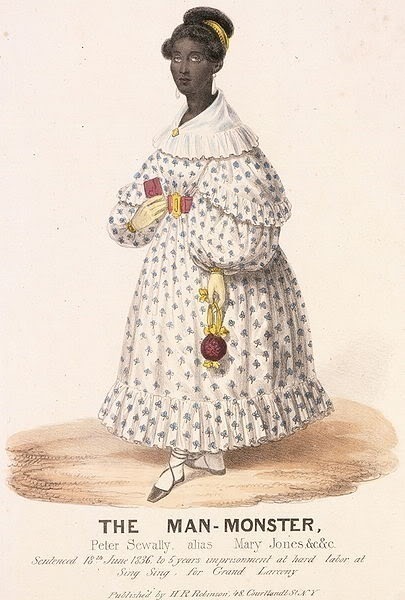
Mary Jones' origin is unknown, but she was an adult in 1836 in New York, USA. She was a free Black person, who preferred to present as a woman. She was sex worker by trade and used a prosthetic vagina. As a side hustle she would steel her customer's wallets, and usually they wouldn't tell anyone because it was 1830s and inter-racial sex and prostitution were illegal and everyone was repressed. Smart. Get your coin, girl. However after one of her more shameless customers discovered his wallet with 99 dollars inside had been replaced with a different man's empty wallet and contacted the police, she was arrested. The police discovered she had male genitals and when they searched her room they found several more stolen wallets. She appeared in court in her female presentation and when asked about her dress, she said that prostitutes she had worked with encouraged her to dress in women's clothing and said she looked better in them. They were right and she had since presented as a woman in her evening profession and among other Black people. She was convicted for grand larceny and sentenced to 5 years in prison. Later she continued to present as a woman and practice sex work, for which she was arrested for two more times.
10. George Sand (1804-1876)

George Sand was pen name of Amantine Lucile Aurore Dupin de Francueil, a French Romantic writer. Amantine was high-born with a countess as a grandmother. George wrote about themself with alternating masculine and feminine language, using feminine language when talking about his childhood, but masculine language often other times. Their friends also used both masculine and feminine terms about them. Victor Hugo for example said about them: "George Sand cannot determine whether she is male or female. I entertain a high regard for all my colleagues, but it is not my place to decide whether she is my sister or my brother." George preferred men's clothing in public, which was illegal for those seen as women without a permit, but they didn't ask for permissions. They alternated between masculine and feminine presentations. They were outspoken feminist, critic of the institution of marriage, committed republican and supporter of worker's rights. They were married at age 18, had two children and left their husband in 1831, but legally separated from him in 1835. They had many affairs with men and some with women, at least with actress Marie Dorval. Their most notable relationship was with Frédéric Chopin, but they fell out before Chopin's death.
#i will be absolutely writing in depth posts about some of these figures#the friend is 100% one of those i fucking love the friend that story is a gift that keeps giving#history#queer history#pride month#queer#lgbtq history#queer tag#trans history#gay history#sapphic history#lesbian history#intersex history
222 notes
·
View notes
Text




Various photos from New York City Pride throughout the 1970s photos: The New York Times
#my scans#70s#pride#lgbt#queer#gay#lesbian#trans#transgender#gay pride#nyc#new york#vintage#lgbt history#protest#lgbt pride#pride month#queer history#new york city#drag#drag queens#us history#civil rights#the new york times#love is love#people#humans#photography
177 notes
·
View notes
Text

Happy pride!
Feel free to send this to people in your life who would love to learn some fun facts!
#pride#trans pride#lgbt pride#gay pride#lesbian pride#gay#lesbian#transgender#pride month 2024#history#.queer history#asexual
230 notes
·
View notes
Text

🏳️🌈 Such a wonderful picture that I just had to post! 🏳️🌈
#pride flags#pride#pride month#trans pride#queer pride#gay pride#happy pride 🏳️⚧️#lesbian pride#mtf pride#wlw pride#bi pride#lgbt pride#asexual pride#queer#lgbtq#lgbtqia#lgbtlove#lgbtq positivity#lgbtq artist#lgbtq history#lgbtq community#lgbtqia+#lgbtqplus#lgbt#lgbtq people#bisexual#lgbt nsft
79 notes
·
View notes
Text

photo from a December 1985 issue of lesbian magazine "i know you know"
257 notes
·
View notes
Text
I made this when my internalized homophobia wasn’t great, and it helped, not only the final result but the process of making it, and going video through video finding the perfect clips and audios, it really made me realize I’m so lucky to be this way. I’m posting this in the hopes it helps someone else
As you can probably guess, none of the videos are mine.
Links: documentary, documentary, documentary, 1, 2, 3, 4, 5, 6, 7, 8 + Queen’s performance
#queer history#lgbt history#lgbt#lgbtq#lgbt community#queer community#queerness#queer#video#edit#lesbian#gay#pride#lgbt pride#queer joy#pride parade#queen band#queen#internalized homophobia#against it#queer positivity#lgbt positivity#lgbt culture#queer culture#pride month#wlw#mlm#lgbt+#freddie mercury
209 notes
·
View notes
Text
Happy Stonewall! Remember to throw a brick to celebrate!
#stonewall#happy pride 🌈#lgbtq#lgbt history#lgbtq rights#lgbtqia#gay history#gay#lesbian#biseuxal#asexual#pride flag#pride month#trans#pride
93 notes
·
View notes
Text
30 Days of Queer Tenderness
Day 12: A Lesbian Couple Embraces, c. 1920



#lesbian#queer#gay#pride month#tenderness#queer history#colorized#photo enhancement#queer tenderness
115 notes
·
View notes
Text

Gay-In at Central Park’s Sheep Meadow, 1970
#christopher street liberation day#gay-in#pride month#pride#protest#queer history#gay activists alliance#mattachine#queer#gay#trans#lesbian#bi#lgbtq#lgbtqia#lgbqti#lgbt#stonewall#stonewall riot#nyc#new york city#new york#1960s#60s#1969#activism#gaa
62 notes
·
View notes
Text
in this lovely pride month i'd like to remind everyone that kink doesn't belong at pride, that saying the opposite is homophobic and that i hope every single weirdo who shows their kinks at pride dies 🏳️🌈
#pride#pride month#pride history#lesbian#gay#bisexual#kink at pride#kink culture#lgbt#lgbt community#lgbt pride#kink pride#lgbtqia#lgbtqia+#lgbt+#queer#trans#transgender
67 notes
·
View notes